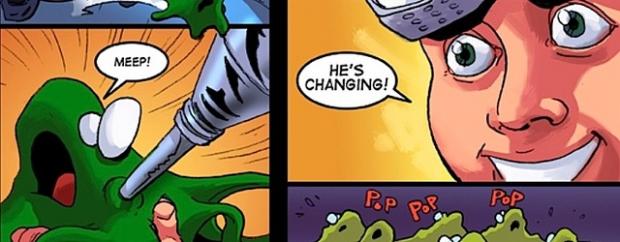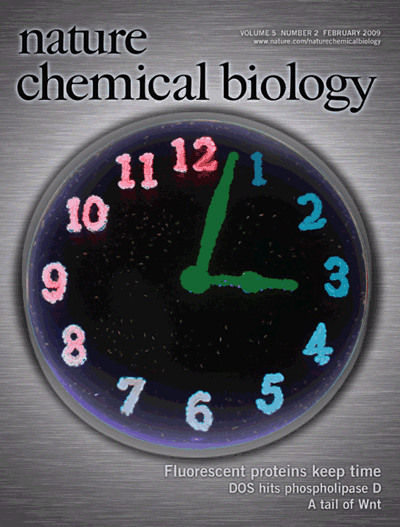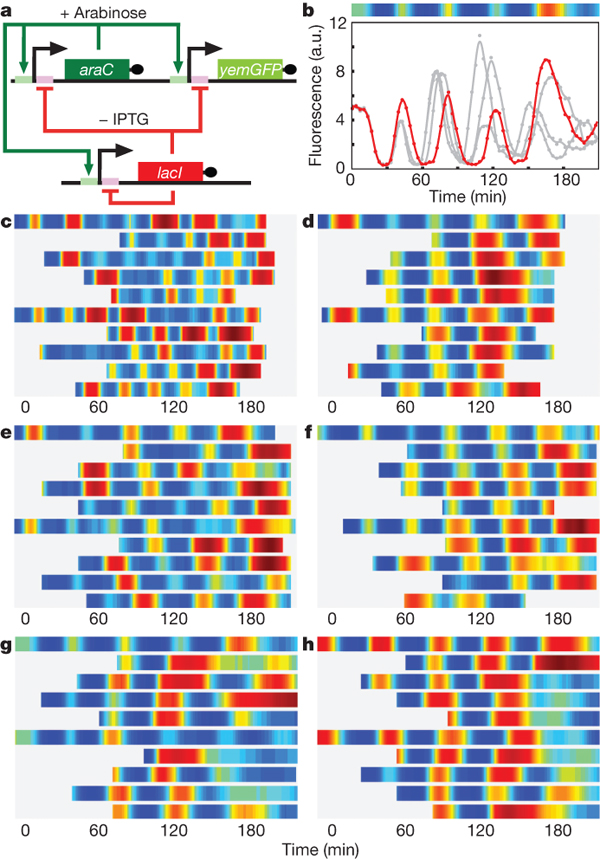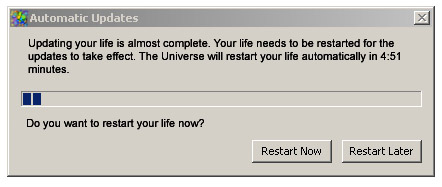
Rebooting life
Submitted by sacha_cetcopra on
The alchemist’s rejected dream of creating a homunculus in a test tube has now been translated with the sober chemist’s dream of creating, not a little man, but at least a virus… perhaps eventually a bacterium.
On the surface this seemingly audacious proposal suggests a deadly bit of Swiftian irony, coming from the sciences which have put all modes of life in jeopardy by their misapplication of herbicides, pesticides, and homicides. The leading minds of science, it seems, would cover this devastating threat by beginning all over again in the hope of turning a large complex molecule into an organism. What an audaciously stultifying proposal! One would hardly guess from this project that life already exists and has penetrated every nook and corner of this planet.
These are quite harsh words against the ambition of “creating life”. These lines are not from a current opponent to today’s synthetic biology. They were written a few decades before by the American historian and philosopher of technology Lewis Mumford, in the second volume of his two-part book The Myth of the Machine (1970). The subject matter “creating life” is part of the discussion of the Baconian heritage of modern science occupying the chapter 5, significantly entitled “Science as technology”.
Mumford makes several arguments against “creating life”. Their aim is to turn a recurring theme accustomedly considered an utlimate challenge into a proposal that look rather odd, conservative, and even absurd. But these arguments can also be used as starters to stir up debate on synthetic biology and putting its ambition into discussion. Here, I want to do just that.
First, Mumford pointed out the deep irony of the ambition of “creating life”. Haven’t the sciences contributed to debunk “life” both conceptually (by assuming no essential difference between living organisms and complicated automata and by designating vitalism as the first enemy to be defeated) and materially (by developing all kind of biocides)? What an irony of history! As it was often claimed in the early years of molecular biology, one should better give up the idea that biology is the science of life; what matters to it is not the nature of “life”, it is rather biological organisation and information. “Life” is not a scientific object. Then why, asked Mumford, would scientists retake part in a quest for a holly grail they’ve spent so much time and effort to demystify? Isn’t there some bad conscience involved here, a vague feeling of guilt? Or else, it is that scientists use the word “life” with (implied) quotations marks, as an ironic term.
Second, Mumford contended that “creating life” would be simply redundant: Why spending billions of dollars, plenty of valuable time, and the effort of the scientific elite for bringing to existence something that already exist in so many different forms almost everywhere on earth? “Observe: billions of dollars, thousands of hours of valuable time, the best berains in science would be marshalled together to bring into existence by artificial means something that already exists in abundance in billions of different forms, in the air one breathes, the soil one walks on, in the ocean and the seashore and the forest. To begin organic evolution all over again in the laboratory would be, to say the least, a redundancy”.
Another of his arguments assumed that, whether possible or not, the desirability of such a feat would be highly questionable because it would amount to create organisms deprived of history. It was precisely because 17th Century rationalists saw living species as the creation of a great Mechanic that the question of evolution did not even pop their brilliant minds. Something that is only the the exact sequence of a preformed plan can’t undergo history. Then, what kind of behaviour, Mumford asked, could be expected of organisms without history? And what would they require from us, since we would have designed them to be of no biological value (no ability to evolve and to flourish, no autonomy, no ability to inventively respond to their environment and turning it into a life-world)? Can’t find out? Then read Mary Shelley’s description of Frankenstein’s monster! Mumford’s piece of advice…
And finally, a last blunt argument: Making life from scratch is like reversing the arrow of time. That is therefore regressive—a huge step backward! More than three billion years backward… So why would we be doing this now?
These were commonsense arguments. Of course, there is a similarly commonsensical answer to these commonsense arguments: We are doing this because it promises to be infinitely useful for bringing out new technologies (for energy, health, environment, food, etc.) by using tailored-made organisms designed to perform just the right functions adjusted to our needs. But why are we doing this now? Mumford’s contention is interesting in that it helps questioning the significance of synthetic biology in terms that goes beyond the triviality of utilitarian considerations: Try to appraise, not just the utility of this or that promise, but the way the promise of synthetic biology itself is framed. In particular, how are we to make sense of such a concomitance of “far-reaching future” and “far-remote past”, of pre-empting the future and re-creating the past (or an alleged one)? Why is the future supposed to eventually come out of a re-enactment of the “origin” (or a possible one)? And what it means for synthetic biology?
An interesting line of argument is offered by Adrian Mackenzie. The article is published in a special issue of Futures on synthetic biology. Its main point is that synthetic biology is not just making new promises; it primarily addresses the practical realisation of the promise of biology as technology. In particular, Mackenzie places special emphasis on synthetic biology as a set of practices that priory attempt to increase the rate, facilitate and accelerate the realisation of biology as technology. It’s about time. This explains his focus on seminal and highly-cited “realisations” of synbio such as clocks, oscillators—and the reason why these apparently trivial devices are considered as iconic realisations of the field, together with higher and higher rate DNA sequencers and synthesisers, and, less visible, the plethora of models, methods, techniques and infrastructures which prior aim is to put things together more quickly or to take control over the rates of biochemical reactions. In this respect one should also look at what is done on circadian rhythm with synthetic biology approaches.In parenthesis, it should be recalled that the achievements foresighted by Bacon in its utopian book The New Atlantis (1624) include not only “the prolongation of life: the restitution of youth in some degree; the retardation of age (…); [the] making of new species”, but also “the acceleration of time in maturations [and in] germination”. Hence perhaps the main—though not exclusive—focus of synthetic biology on bacteria: it’s not only that they are (allegedly) more “simple” (unicellular, often with only one chromosome, less genes and no nucleus) and thus easier to engineer; but rather that they are accelerators of evolution (high multiplication and mutation rate) and of synthesis (able to produce almost instantaneously the high-energy containing hydrocarbon molecules that the sedimentation of biomass takes millions of years to make). Parenthesis closed.
Therefore Mackenzie insists that genetic clocks and toggle-switch oscillators shouldn’t be considered as dumb gadgets just because they have no particular utility for a particular application: “Much is at stake in biological clocks. These devices do not only measure time biologically. They are part of the realisation of biological time in the so-called ‘century of biology.’” They are what he calls “infrastructural-icons of realisation”: icons, in the sense where they show what synthetic biology might do (they are iconic of synbio’s future); infrastructural, in the sense where they seek to bring and even to present themselves as embodiments of the basic capabilities for doing what synthetic biology promises. “Infrastructural-icons of realisation” are semiotic-material constructs, both narratives and objects, and not just far-fetched speculation or hype discourse to be opposed to matters of fact, actual practices and real objects; they are the messengers of a prospective ontology; as working narratives, they are fully embodied in the material practices of synthetic biology. Mackenzie’s contribution thus provides interesting cues to address one of the questions raised here: What can we tell by looking not just at the utility of this or that promise, but at the way synbio’s promise itself is framed? But what about the other question raised from Mumford remarks, on the concomitance between “pre-empting the future” and “moving backward in time”? Mackenzie’s paper deals with the future, and says nothing about the past. (for an illustration of this concomitance of future and past and even of its use as a powerful narrative device, see George Church’s last book tellingly entitled “Regenesis” and its table of contents).One interpretation comes to mind that follows directly from Mackenzie’s paper. If synthetic biology less focuses on particular promises but rather seeks to establish the “realisability” or “fulfillability” of the (21th) “century of biology”, then it also seeks to establish the “realisability” or “fulfillability” of the promises that have already been formulated during the (20th!) “century of the gene”: “feeding the world with GMO-crops” (in part already debunked as a flawed promise), “abundant renewable energy with biofuels” (already an old and perhaps a false good idea), “fixing biological errors with gene therapy” (already shown to be a practical failure), “transcending Moore’s law with biomolecular electronics” (already tried and never worked so far), or else, “fully mapping and rationally understanding the mechanisms of pathological development out of genome sequencing” (the Human Genome Project which, instead, has given way to a post-genomic era facing an avalanche of data, variants, factors and a plethora of statistical correlation models). Contrarily to these previous endeavours the big promise of synthetic biology is not so much about these particular promises even if it encompasses all the above. The promise is rather to build, on a general conception of technical action based on organisms as engineered artefacts, the infrastructure or “chassis” allowing the fulfilment of all the still-not-yet fulfilled promises of the biotechnological era and beyond. The endeavours of synthetic biology evoke the effort of salmons painstakingly but confidently going upriver. Its goal is to move backward, up to the reverse salient where the “already tried” is no longer an “already failed” and still a “not yet achieved”. The reverse engineering of biological system could be thought just like that.
A story often told by synthetic biologists tells that GMO proponents were wrong in trying reassuring people and minimising the risks by telling them that the molecular innovations of genetically modified crops work within the reach of natural evolution and in the footsteps of its own tinkering process; that it’s nothing more than other means to do “natural genetic engineering” (breeding, artificial selection, farming practices, etc.). On the contrary, for many synthetic biologists the good message to send is “the farther, the safer”: The more artificial, different and remote from any known actual natural system the synthetic species is, the less chances it has to enter in hazardous interaction with existing biotopes. But in order to do that, one must move back to the point (the reverse salient) where the history of life as we know it today has not yet begin, be it by bottom-up assembling (e.g. protocell research) or by reverse engineering (e.g. minimal genome research).
For sure there is something missing in Mumford’s argument about redundancy when it comes to synthetic biology: He assumes that “creating life” means recreating life as it is and as we know it, not life as it might be, not actual life but “possible life”. And indeed, synthetic biology tries to do just that. It is all about building possible organisms, possible functions and infrastructures, not actual ones. Such would be the way for synbio to escape redundancy: It does not seek to go backward to a point of time, which, “once upon a time”, has been actually been lived by organisms. It rather seek to “un-actualise” organisms, delete the inscription of time, reset organisms.
The system has followed particular paths. Natural selection has gradually eliminated the range of possible innovative features through path-dependant actualisation. The only way to move far further ahead is then to move far backward in order to recover the pristine state of all possibilities open. Paradoxically, synthetic biology does not seem to consider actualisation as desirable realisation of the possible. It would rather avoid actualisation as a premature restriction of the possible. It seeks potentialisation (making the possible qua possible available and co-present with the actual) rather than actualisation (sequentially and irreversibly shifting from possible to actual). The possible is no more something that predates its actualisation. Like in Heidegger’s saying “the origin lies ahead of us”, the possible is that which is aimed.
Be it a historical reality or a fictional attractor (strange attractor?), something approaching to this generic infrastructure where possibilities are still open towards many bifurcating directions is often invoked under the apparently unmysterious term of “the chassis”. In synthetic biology, “a chassis” is for instance, E. coli, yeast, or M. Genitalium, microbes who, for whatever reason, readily “accept” new genes and new biochemical pathways, and are thus widely used as the basic framework within which specific functions can be tailored. Here, it is possible to treat these organisms as devices in which well-characterised parts are assembled in various ways to generate desired functions precisely because their “chassis” is given under the form of a living host for the engineered genetic plug-ins. Here, the irony is that the artificial view of organisms as engineered artefacts works only because a living being is given to allow for it under conditions that are ill-understood and whose understanding is shelved. Here rational design is based on ignorance, and it is this ignorance that affords “rational designability”. But “THE chassis” expresses the dream of a “root” infrastructure were all possibilities are open to any particular realization or actualisation; just like the operating system (OS) of a computer, it refers to the minimal set of hardware (cellular structure and metabolism) and software (minimal genome) able to interact and function together. It is the stuff into which plugging any biobrick or module would provide you with the execution of the desired and purposefully designed function. This root chassis would not have to be known in all its mechanistic and chemical detail. Its sole existence would equate knowledge. The perfect chassis has no history. In fact, the chassis or operating system is what you get when you reboot the system.Indeed. How to recover the pristine state of all possibilities open? Just reboot the system! Synthetic biology is not about “creating life”. It’s about “rebooting life”. And it is less about “creating life” than about resetting everything that has made life creative—life not as a scientific object but rather as the normative activity by which an organism creates its milieu as much as is creatively constrained by it. Remember Darwin’s favourite animal: the earthworm. For a dominant thread of synthetic biology, “evolution” (be it natural or artificial) is a straightjacket; it has entered into too much path-dependency and technological lock-in to be of any worth for design purposes. The world is old. It has gone through deadly paths (at least for humans and their arch of domestic and companion species). It’s time for rejuvenation! So just reboot the system! Reboot the life sciences! Let the kids take the lead! Here is why the childish spirit of synthetic biology is so emblematic of its style of research. It’s not just a matter of marketing an image of a cool and funny way of doing science. The image of children playing with legos or buddy balloons is consubstantial to synthetic biology, which is about rendering everything young again, bringing back the origins, or recreating a new origin.
Can rebooting be a promise? Nietzsche once wrote that “promise is the memory of the will”. Promising, thus, is also about the past. It is the task of actively building continuity against the forces of dissolution and dispersion of times. But the mode of existence of the past in synthetic biology is very far from that: If it moves backward in time, it is for erasing memory, erasing time, not for retaining some moments that would be reinvested creatively in the future and for the future. In computing practice, “reboot” is a metaphor for kicking the machine, giving it a good shock to start all over again, hoping that it will function according to our needs. Rebooting convey an unavoidable dimension of violence. As we often do in our behaviour with machines, it can be a despaired act motivated mostly by incomprehension. But humans have also proved capable of softer ways to pacifically and methodically reboot things, lives and stories. Interestingly, the term is also used in novel writing. Wikipedia article “rebooting (fiction)” reads: “In serial fiction, to reboot means to discard all continuity in an established series in order to recreate its characters, timeline and backstory from the beginning”. Rebooting is dangerous but it is not necessary negative. The same Nietzsche considered oblivion as a key virtue to allow for newness. Rebooting one’s life is what people generally do to get rid of anxiety and depression. Partying hard, using drugs, getting electroshocks, breaking with a partner or convert to a religion (or to atheism) are various ways to do so. But rebooting life is also running the risk of the dissolution of life.
by Sacha Loeve, Cetcopra / University Paris Sorbonne




